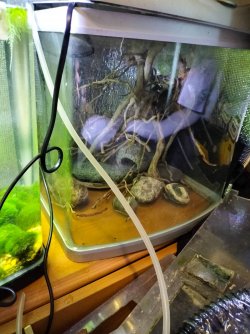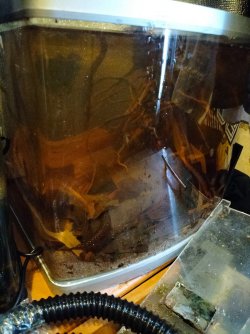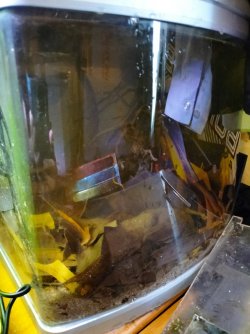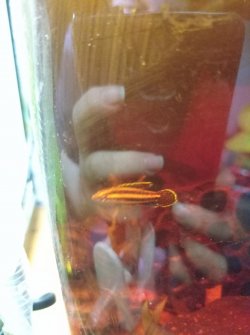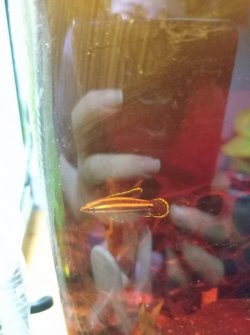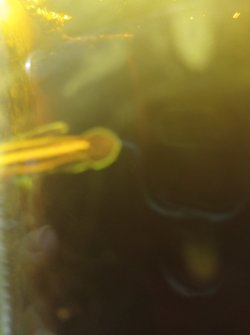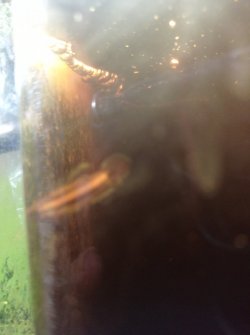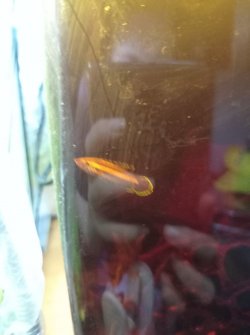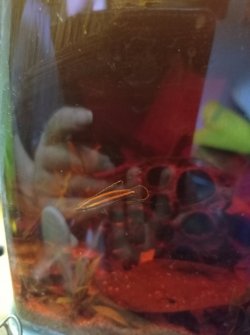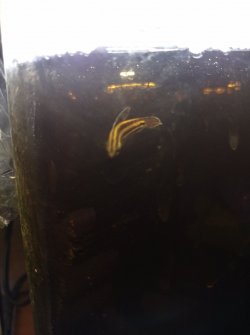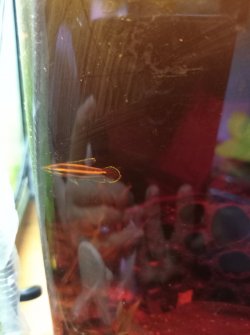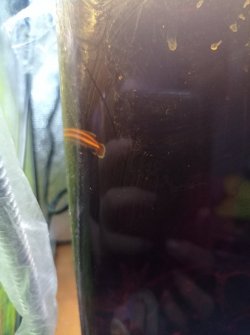ZanaZoola14
Fish Fanatic
Hello, I have a group of liquorice gourami, and wondering what type I do have, thanks. Shipped as P. Deissneri - however that seems very unlikely.
I've tried to get the best photos that I can.
(hope this works
https://photos.app.goo.gl/8nVS3DYpDpyHVYnRA
as this has videos that will help more)
Thanks for any assistance.
I've tried to get the best photos that I can.
(hope this works
https://photos.app.goo.gl/8nVS3DYpDpyHVYnRA
as this has videos that will help more)
Thanks for any assistance.
Attachments
-
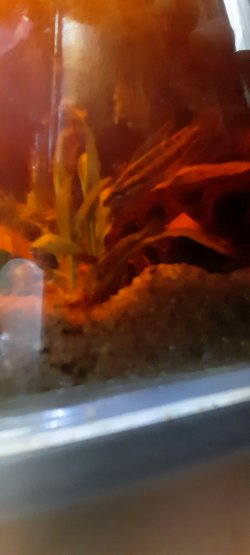 20230202_143724.jpg78.7 KB · Views: 40
20230202_143724.jpg78.7 KB · Views: 40 -
 Screenshot_20230202-162716_Video Player.jpg90.4 KB · Views: 40
Screenshot_20230202-162716_Video Player.jpg90.4 KB · Views: 40 -
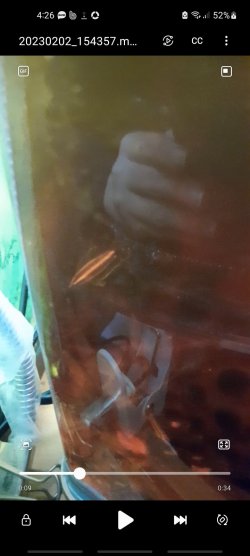 Screenshot_20230202-162632_Video Player.jpg89.3 KB · Views: 38
Screenshot_20230202-162632_Video Player.jpg89.3 KB · Views: 38 -
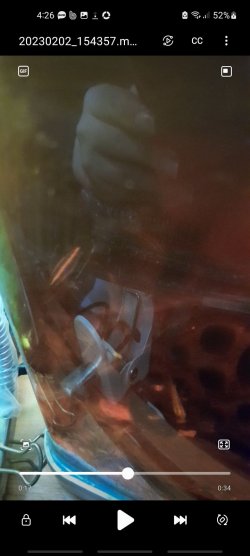 Screenshot_20230202-162650_Video Player.jpg89.9 KB · Views: 42
Screenshot_20230202-162650_Video Player.jpg89.9 KB · Views: 42 -
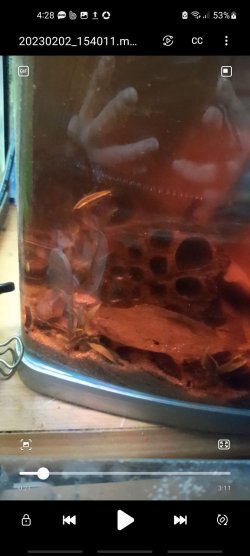 Screenshot_20230202-162829_Video Player.jpg104.2 KB · Views: 39
Screenshot_20230202-162829_Video Player.jpg104.2 KB · Views: 39 -
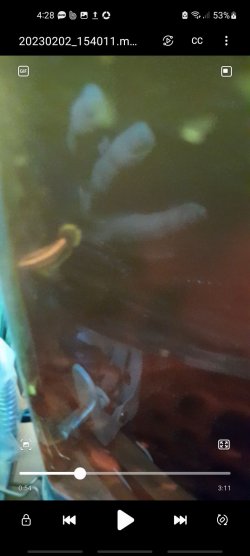 Screenshot_20230202-162850_Video Player.jpg82.4 KB · Views: 42
Screenshot_20230202-162850_Video Player.jpg82.4 KB · Views: 42 -
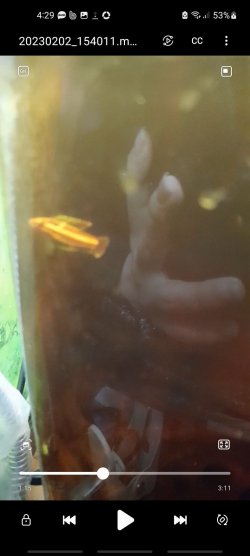 Screenshot_20230202-162906_Video Player.jpg73.9 KB · Views: 43
Screenshot_20230202-162906_Video Player.jpg73.9 KB · Views: 43 -
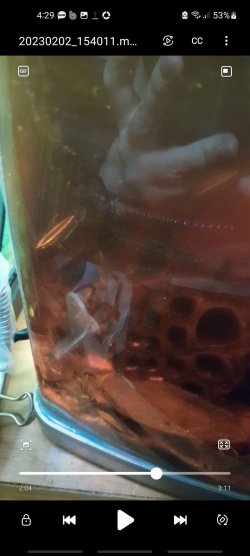 Screenshot_20230202-162915_Video Player.jpg97.1 KB · Views: 40
Screenshot_20230202-162915_Video Player.jpg97.1 KB · Views: 40 -
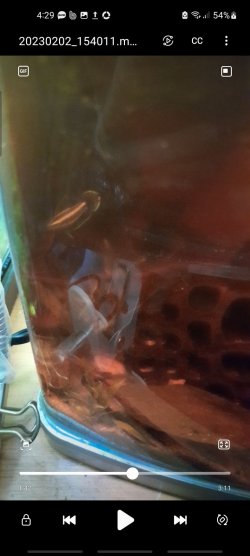 Screenshot_20230202-162939_Video Player.jpg95.7 KB · Views: 39
Screenshot_20230202-162939_Video Player.jpg95.7 KB · Views: 39 -
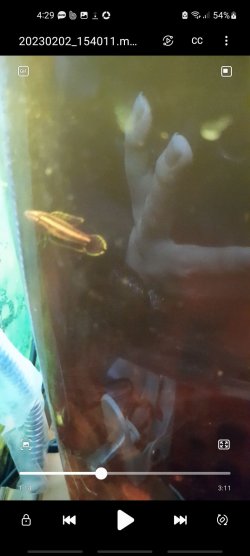 Screenshot_20230202-163000_Video Player.jpg84.2 KB · Views: 47
Screenshot_20230202-163000_Video Player.jpg84.2 KB · Views: 47 -
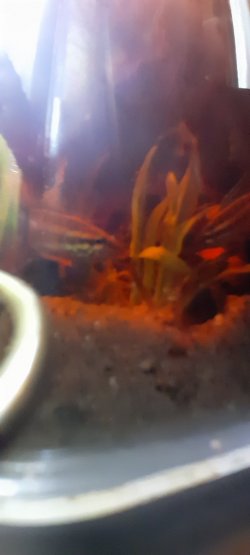 20230202_143709.jpg70.8 KB · Views: 41
20230202_143709.jpg70.8 KB · Views: 41 -
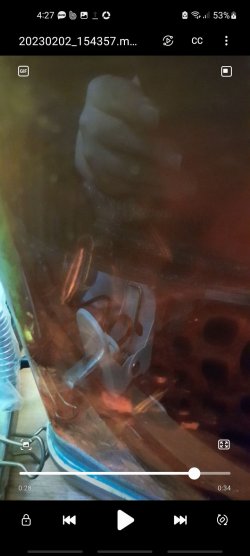 Screenshot_20230202-162739_Video Player.jpg92.2 KB · Views: 40
Screenshot_20230202-162739_Video Player.jpg92.2 KB · Views: 40



